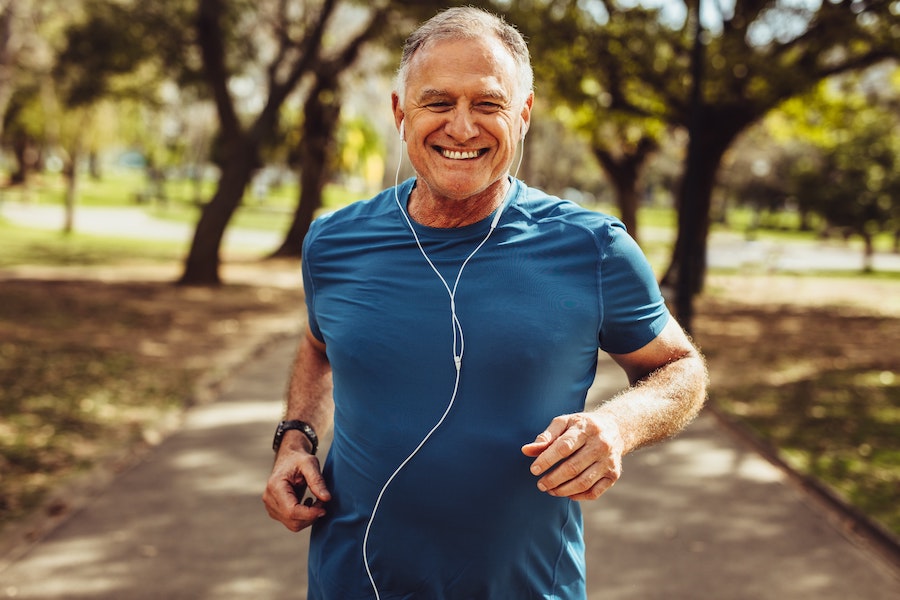Ask an expert: How much exercise should you be doing over the age of 50?
As we age, increasingly, barriers can stand in the way of us being able to run, jump, skip or dance like we used to, but the benefits of staying active in older age shouldn’t be ignored.
We asked Lin Seeley, wellbeing coordinator at Bupa Sandhills Court care home to explain why exercise is so important to older people, and how much we should be doing aged 50 and beyond…
“As people get older they tend to become less active. NHS figures suggest that, on average, over 65s are the most sedentary age group – spending upwards of 10 hours a day either sitting or lying down.
“I’ve spent my career working with older people and know that keeping active as we age has a big impact on overall mental and physical health.
“Perhaps most obviously, exercise can help us maintain a healthy weight. Being overweight or obese can have a detrimental impact on many areas of our health, increasing the risk of heart problems, type 2 diabetes and certain cancers. Likewise, it reduces lethargy and means we can get on with the activities we enjoy.
“It’s not just about keeping the weight off either, as regular exercise helps us keep healthy muscles. As we get older it becomes harder for our bodies to maintain muscle, but exercise can combat this, improving our strength and balance so we can continue to lead the independent life we’re used to.
What a great 78 mile #sussexdowns ride, brilliant signage and a lovely route including #ditchlingbeacon . Thanks @ukcyclingevents -@Livgiant #irongran pic.twitter.com/BfMBN78hed
— Edwina (@eddiebrocklesby) September 8, 2019
“With this in mind, it’s not surprising to see a link between exercise and good mental health, as we’re able to keep up things like hobbies, social commitments, or even playing with the grandchildren. Likewise, it can have an impact on our confidence and self-esteem. This is thought to be one of the reasons active people have a reduced risk of suffering from depression.
“So how much should you be doing? NHS guidelines suggest over 50s should aim for around two and half hours of moderate exercise a week.
“Ideally this would be spread out, with short bursts of activity – around 20 minutes to half an hour – most days of the week.
View this post on Instagram
@CrossFit1939 #Crossfit #Coolestlittleboxinbrooklyn #fitnessaddict #fitspiration
“Clearly this doesn’t have to be weightlifting or marathon training, but it does need to be something that raises your heart rate. Activities like a brisk walk or bike ride should work, but you can also see an impact from things like pushing the lawnmower – or even the vacuum cleaner, if you’re vigorous enough.
“Again though, it’s important not only to focus on cardio but also building and maintaining muscle. While weight training and Pilates can be good for this, household tasks involving heavy lifting – like big gardening projects – can also help. Varying our exercises is also important as it works different muscle groups.
“The most important thing to remember though is to do what’s right for you. Exercise in your 50s is going to be very different to that in your 70s and 80s.

“Adapt what you do as you age. If you don’t have the strength or balance you used to, there are other ways of staying active. For example, in our care homes, activities like armchair yoga or slow dancing are really popular, and help keep people happy and healthy.
“Likewise, it’s important to keep you brain active – which is why I recommend things like puzzles, crosswords and quizzes, to keep people both mentally and physically sharp in their older years.”
The Press Association
Latest posts by The Press Association (see all)
- 6 mind sports to exercise your brain and keep you sharp - December 20, 2024
- Quiz: What classic Christmas food or drink are you? - December 20, 2024
- Leftover turkey and watercress pie - December 20, 2024
- Catherine and William choose family shot for Christmas card photograph - December 19, 2024
- The best books to watch out for in 2025 - December 17, 2024




















